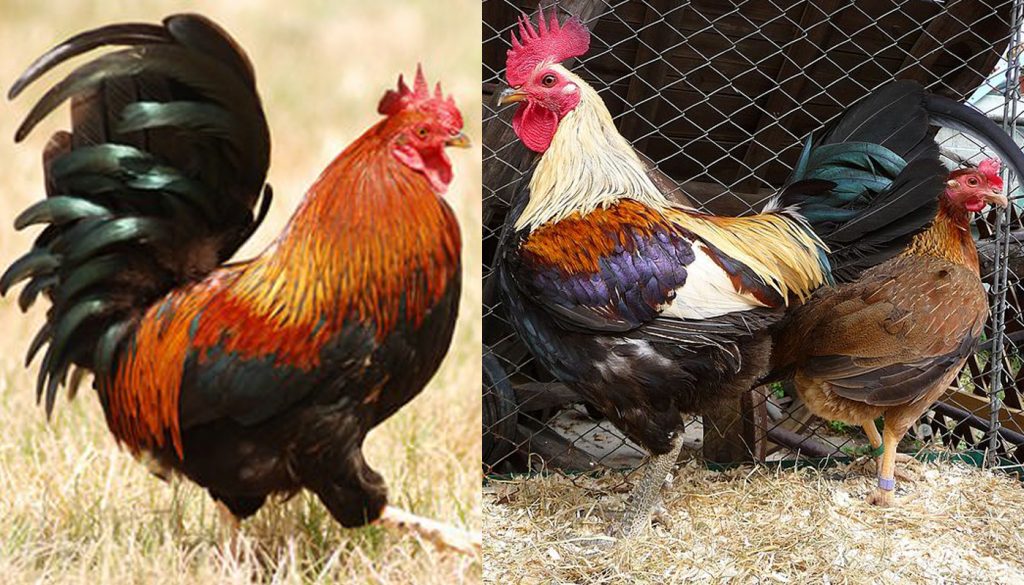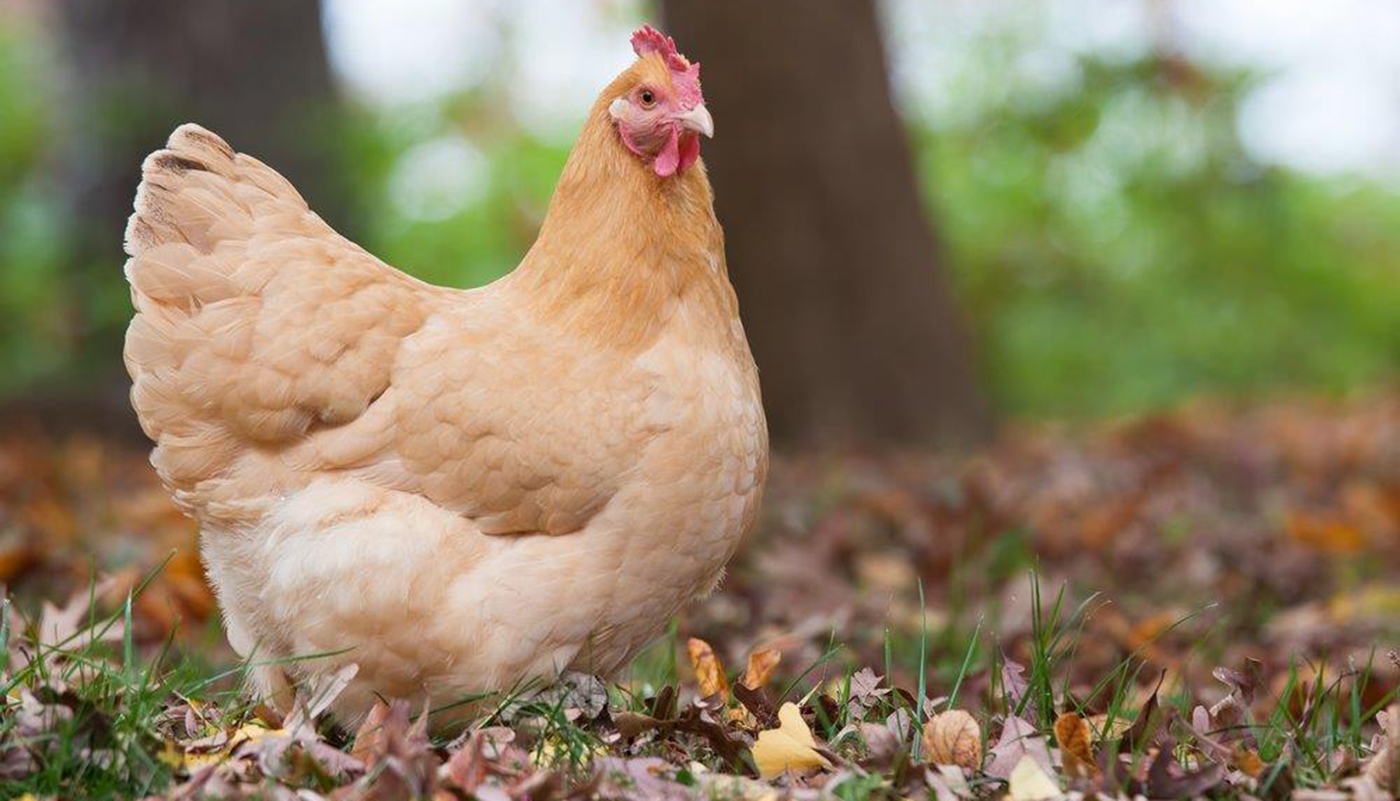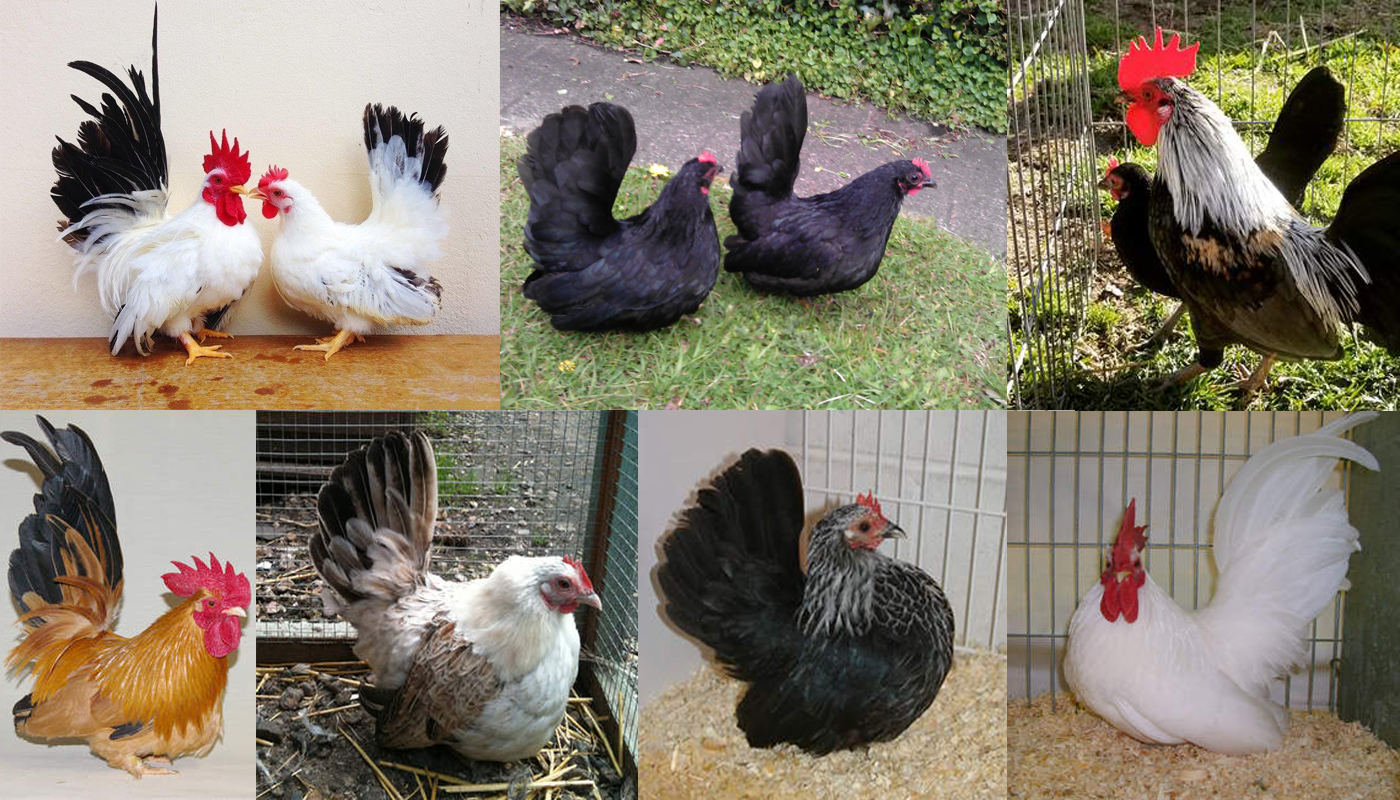
The Old English Game Chicken is an Ancient chicken that was originally used for cock-fighting.
Upon the ban of the sport, they were primarily raised as exhibition birds. They are a very aggressive chicken and that is true for both the males and females of this breed.
Both the hens and roosters have to be kept apart from other breeds as they will fight with them.
The hens do not lay very many eggs and the ones they do are quite small, but they do make excellent brood hens and foster mothers. But be warned as these hens are very aggressive mothers and will protect their chicks (even the foster ones) quite fiercely. It is not a breed that is recommended for the novice chicken keeper or a breed that should be kept around children. The roosters are fierce even when it is not breeding season and will fight to the death. They are also very protective over their hens and have been known to attack snakes.
| Country of Origin: | United Kingdom |
| American Poultry Association: | Yes – They are recognized as a breed of chicken in the United States |
| Chicken Category: | All Other Standard Breeds |
| Chicken Class: | Game |
| Bantam Variety Available? | Yes – Game Bantam Classification |
| Good Starter Chicken? | No, they are not the best starter chicken as both the hens and roosters are really aggressive. |
IDENTIFICATION⇒ |
Appearance/Body: They have compact bodies with glossy tight-knit hard feathering. They have long majestic necks and a curved beak. They have very fierce looking eyes and a strong well-proportioned head. The male Old English comb’s and wattles are usually dubbed at an early age. The combs, wattles and earlobes of the breed are a bright red. Both the male and females have hard broad strong tails with the male having a curving tail feather. They have clean light blue strong legs with four toes.
Color(s) Brown-Red, Golden Duckwing, Silver Duckwing, Red-Pyle, White, Black-Breasted Red, Spangled and Black
Comb: They have a single comb
Ave. Weight: Pullet: 3 lbs. Hens: 4 lbs. Cockerel: 4 lbs. Rooster: 5 lbs. |
PURPOSE⇒ |
Eggs: They are fair egg layers.
They lay medium sized cream/tinted eggs They lay 100 eggs per year They will lay throughout the year They start to lay eggs from around 22 weeks old.
Meat: They have white skin
They have been known to be an excellent table bird even though they are not purposely bred for this. Their bodies are well proportioned, and their even muscle distribution gives then delectable meat.
Breeding: They are not too difficult to breed
The hens do get very broody They make good brood hens They will sit on their eggs They will raise their chicks and make very good mothers. They also make excellent foster mothers albeit overtly aggressive ones that will fiercely protect any chicks they have hatched or are responsible for.
Show Bird: These ornamental birds make an excellent show bird
Pets: They are not really good pets but can be tamed if raised correctly
Other: These beautiful graceful birds will certainly add a bit of spice to the garden
|
CHARACTERISTICS |
|
|---|---|
| Life Expectancy: | The average lifespan is 10 – 15 years |
| Health: | They have no known major health issues |
| Temperament: | They are stand-offish, aggressive and very independent |
| Flyers? | They can fly |
| Noisy Birds? | They are relatively very noisy birds |
| Interaction with other chickens: | They are aggressive birds and do not really socialize well with others. |
| Good with kids? | Not a good chicken to have around children as not only are they flighty but they are aggressive. |
| Socialize Behavior? | They are aggressive, so most domestic animals tend to avoid them |
| Known predators: | Always keep an eye on domestic pets such as dogs and cats. If hawks and or foxes are in your area it is always best to take precautions. Check with local animal shelters, zoos, vets, animal control and or pet stores about common predators in your area. |
| Conservation Status: | These birds conservation status is recorded as “threatened” |
IDEAL ENVIRONMENT |
|
|---|---|
| Garden Size: | They do not like being confined and need a medium to larger sized garden or homestead |
| Ideal Climate: | They prefer the colder climates as they do not handle the heat very well. |
| Ideal Coop: | The rule of thumb for any coop is 50 cm x 50 cm per hen/rooster in the coop. Ensure there is a good space for the nesting boxes and nightly roosting rails at least 1.5 inches wide. Good ventilation for air but not too drafty especially in winter. It is always a good idea to raise the coop off the ground to give the birds a dry place to roost and lay especially in wet weather. |
| Ideal Coop Run: | They will need their coop run to be completely covered or they will attempt to escape. |
| Ideal Flock Size: | They are not fussed at the size of their flock. |
| Special Instructions: | Roosters need to be kept apart as they will fight each other to the death. |
| Accessories: | The following accessories are ideal for your coop: Nesting boxes Straw for the boxes and roosting area Roosting rails Perches Water troughs/bowls Food bowls/feeders Heating lamp(s) Animal carrier for transport purposes |
| You may Also Like: | 45 FREE DIY CHICKEN COOP PLANS, TUTORIALS AND DESIGNS |
WHERE TO BUY THEM |
|
|---|---|
| Live Poultry Outlets: | They are not too hard to find at live poultry outlets and farms. It is best to get Old English Game Chickens from hatchlings to try and raise them correctly or you will not be able to handle these birds at all. |
| Internet Poultry Websites: | Internet sites such as Purely Poultry and Cackle Hatchery do sometimes have these birds for sale. If buying your chickens from an Internet site it is best to check if the site is reputable and what others who have had dealings with them say about their purchases. |
| Organizations: | Associations like the American Poultry Association and the American Livestock Conservancy usually has an abundance of information on the various breeds in the USA. They should also have some information on reputed sellers, clubs and breeders throughout the USA. |
| Breeders Clubs: | The Old English Game Club of America is a site that is worth having a look at and contacting. |
| Other: | The organizations and or breeders listed above may also have a host of valuable information about your chickens. They will also be able to provide you with any special instructions, problems, etc. about your chickens. |
HISTORY
Game Fowl were brought to England in the first century AD by the Romans. They were used for cock-fighting for centuries until the sport as it was a relatively cheap sport. Anyone could raise chickens especially as the Game Fowl hens make excellent breeding chickens. They were broody and raised their young to be quite fierce. Thus, people from all classes could participate in the sport and cockfighting became a very popular sport. Public schools adapted the sport in order to encourage and inspire courage and endurance amongst the youth. The roosters were paraded as role models as they displayed their strength, endurance and courage. The sport was banned in 1849 as
The Old English Game Fowl comes from a lineage of ancient fighting cocks and their appearance has not changed much in almost one thousand years.
The sport was banned in 1849 and declared as a “brutal blood sport that has no place in a civilized society”.
There were great fines and threats of incarceration for any found illegally participating in the sport.
Game Fowl were bred for certain traits and in America, the Old English Game Fowl tend to be narrower, smaller and their feathers a bit softer than their British cousins. They are also a lot faster and more agile as they are lighter than the English variety of the breed.
They a very hardy breed that can withstand the most extreme climates, but they are excellent foragers that can well fend for themselves. They are a bird with a lot of strength and stamina they can also fly very well and cover quite a distance.
The Old English Game Fowl also has a long lifespan with reports of some chickens living for 15 or more years.
NOTES / SPECIAL INSTRUCTIONS
As they are registered as a “threatened” conservation status they may need an extra license to own or keep in your garden. For advice on what the bird’s conservation status and orders are please check with your local conservation department.
For breeders, it is imperative that you always check your bird’s bloodlines and ensure you are buying your birds from a reputed breeder/farm. In order to sell birds of such stature, they have to be recorded and documented, always check with local animal breeding organizations for these records.
These legitimate documents are also required should you wish to show your bird(s) in various poultry shows/competition showings.
For information and advice on adopting rescued animals, you can visit or contact your local animal welfare center.
Video
USEFUL LINKS
- Caring for your Chicken
- Feeding
- Health
- Socializing your Chicken
- Breeding Chicken
- Raising Chickens A-Z
- Hatching Eggs
- What is Molting
- Animal Shelter (ASPCA)
- American Veterinary Medical Association
- American Poultry Association
- American Animal Welfare Society
- American Animal Control
- American Animal Husbandry Society
References
- https://en.wikipedia.org
- https://livestockconservancy.org
- https://www.roysfarm.com
- https://www.mypetchicken.com
- https://www.backyardchickens.com
- https://www.feathersite.com/
 RAISING CHICKENS – A STARTER GUIDE FOR THE FIRST-TIME CHICKEN KEEPER
RAISING CHICKENS – A STARTER GUIDE FOR THE FIRST-TIME CHICKEN KEEPER BEST TEMPORARY/PORTABLE CHICKEN RUNS FOR THE BACK GARDEN TO BUY
BEST TEMPORARY/PORTABLE CHICKEN RUNS FOR THE BACK GARDEN TO BUY Orpington Chicken Breed – Everything You Need to Know
Orpington Chicken Breed – Everything You Need to Know 10 Chicken Breeds for the Colder Climates
10 Chicken Breeds for the Colder Climates 10 Chicken Breeds that have White Plumage
10 Chicken Breeds that have White Plumage Japanese Bantam Chicken Breed – Everything You Need to Know
Japanese Bantam Chicken Breed – Everything You Need to Know COMMON CAUSES OF HEALTH ISSUES,SYMPTOMS AND PREVENTATIVE MEASURES
COMMON CAUSES OF HEALTH ISSUES,SYMPTOMS AND PREVENTATIVE MEASURES Planning and Housing a flock of chickens
Planning and Housing a flock of chickens CONDITIONS THAT AFFECT A CHICKENS SKIN
CONDITIONS THAT AFFECT A CHICKENS SKIN Australorp Chicken Breed – Everything You Need to Know
Australorp Chicken Breed – Everything You Need to Know CHICKEN DISEASES THAT EVERY CHICKEN OWNER SHOULD BE AWARE OF
CHICKEN DISEASES THAT EVERY CHICKEN OWNER SHOULD BE AWARE OF Cornish Chicken Breed – Everything You Need to Know
Cornish Chicken Breed – Everything You Need to Know